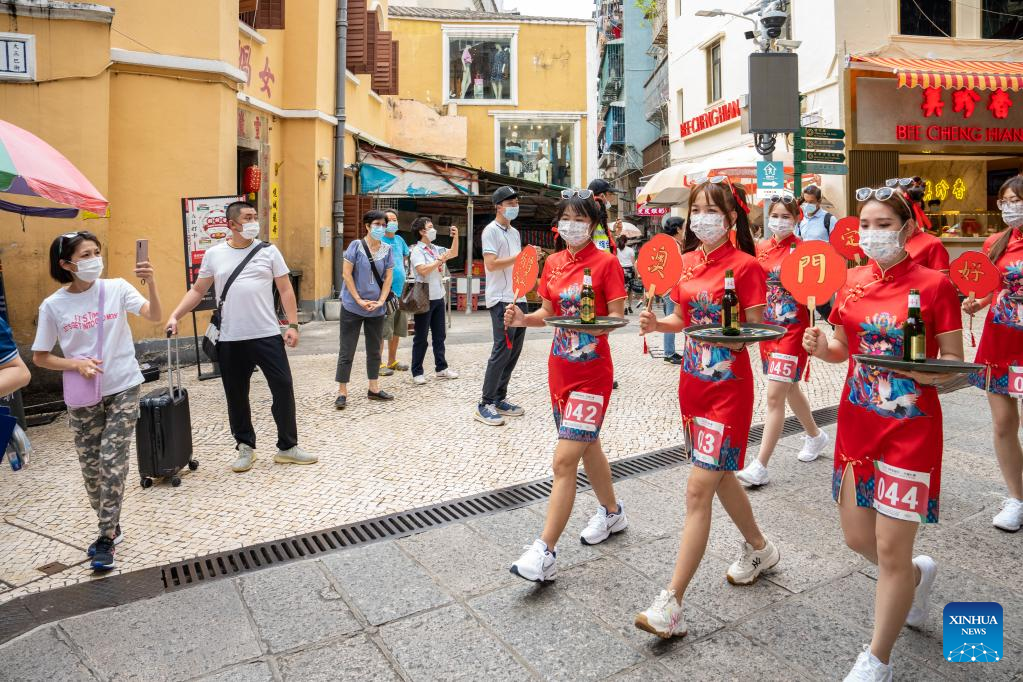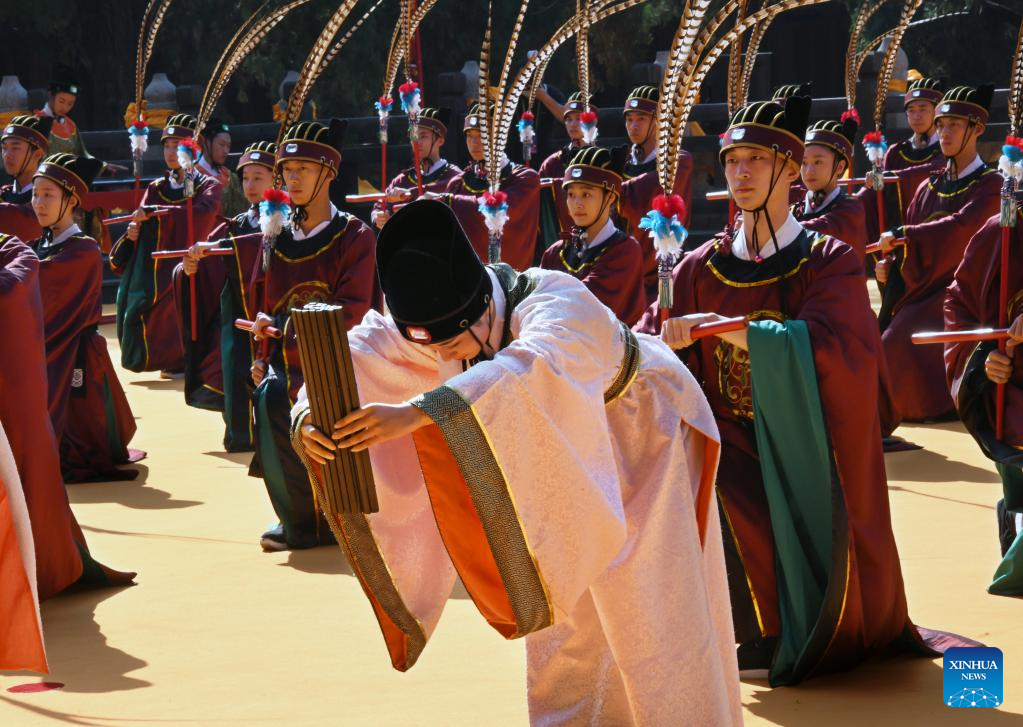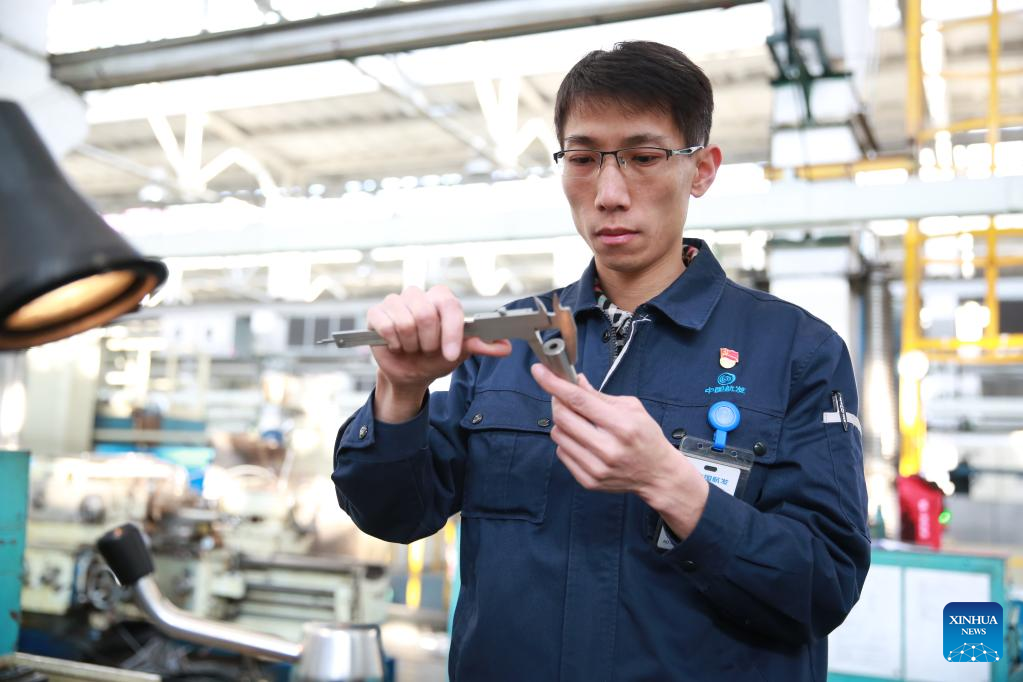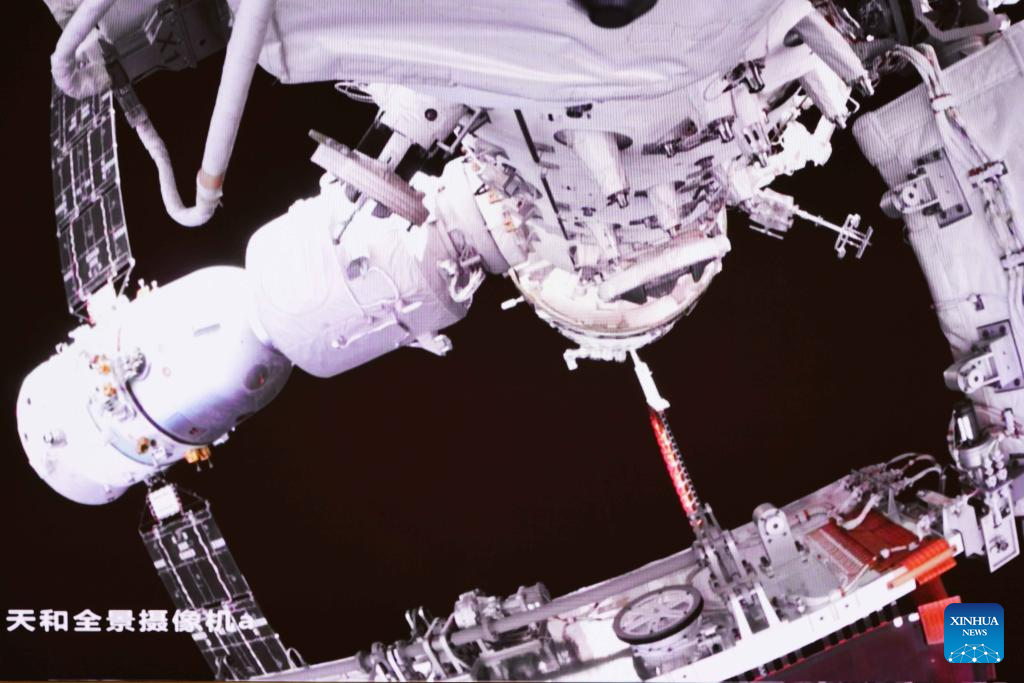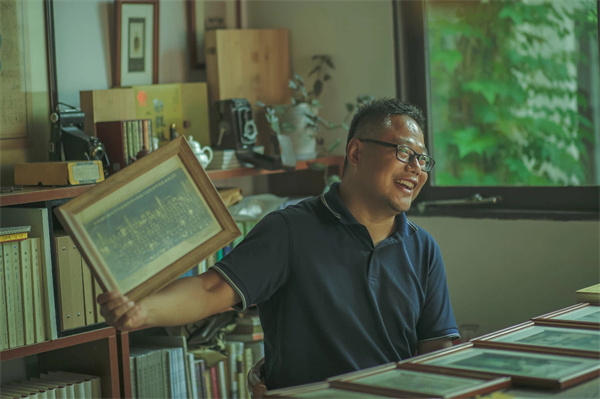
(Photo provided to Xinhua Daily)
In the old street of Renfengli in Yangzhou City, there is a private musumem in which contains more than 30,000 old photos collected by Mu Xiangzhong over the past 10 years. Every morning, Mu meticulously cares for these photos that reveal fascinating insights into the city's development. He describes the experience as "walking through the city's history with a magnifying glass in hand."
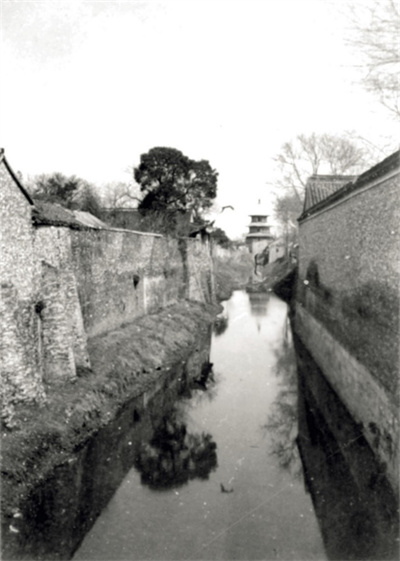
Architecture often narrates a city's heritage and evolution. The Wenchang Pavilion, Yangzhou's most renowned landmark, is a frequent subject in many photos. A picture captured in 1937 illustrates the original Wenhe River beneath the building, devoted to Wenchang Dijun, an ancient Chinese deity in charge of culture and literature.
Prior to the founding of the People's Republic of China in 1949, Wenhe had become heavily silted and degenerated into a stinking ditch. Yangzhou began to fill the river from 1952 and completed the project by 1959, turning the waterway into today's Wenhe Road while preserving the Wenchang Pavilion during construction.
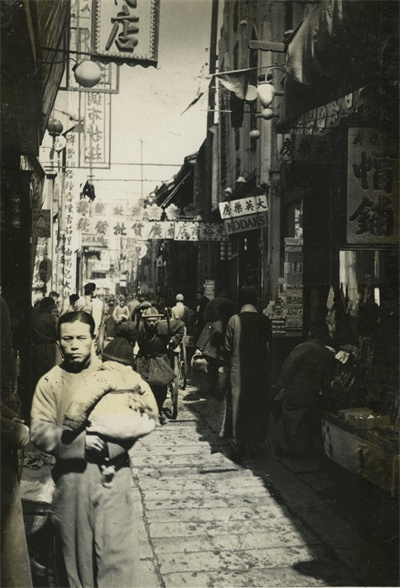
Certain photos show the evolution of the shopping districts in Yangzhou. An old snapshot of Yuanmen Bridge some 70 years ago shows the city's central business district at that time. A 200-meter-long street was flanked by stores selling silk products, hats and medicines.
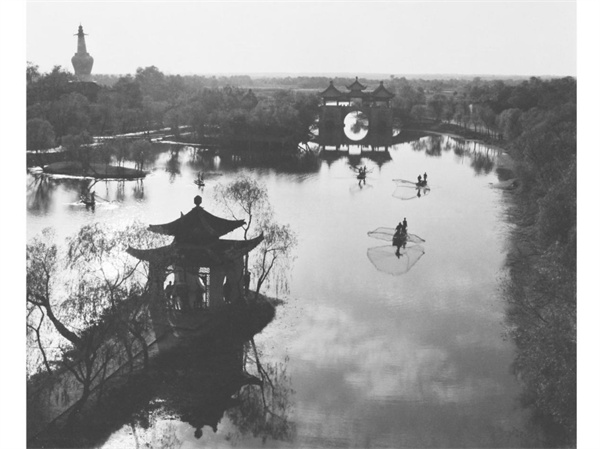
Among the collections, a photo from 1978 captures locals fishing near the Wuting Bridge, another landmark across the Slender West Lake. The yellowed image evokes memories of the hustle and bustle around the bridge, where people would enjoy pancakes or tea at nearby stalls.
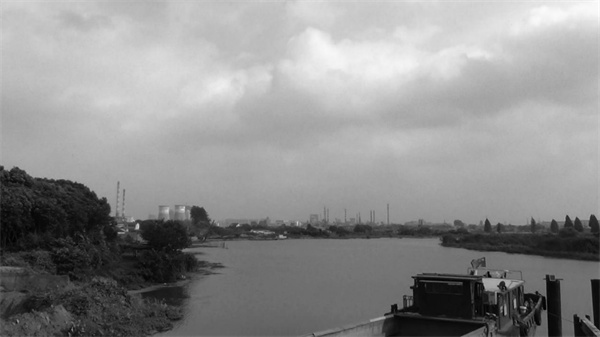
Mu also has a special folder with nearly 300 photos associated with the southern Yangzhou area called Sanwan (three bays), formed due to the Grand Canal. As an important relic of the ancient canal waterway, Sanwan shows the wisdom of Yangzhou people in water management.
However, in the 1980s and 1990s, Sanwan was designated an industrial zone for more than 80 chemical enterprises, including pesticide and dyeing factories. Some photos in Mu's collection reveal the declining environment of that period, characterized by waste, sewage and black smoke emitted from the plants.
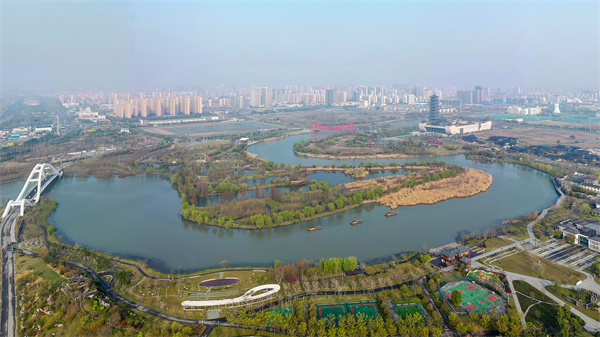
Sanwan in the present day (CFP Photo)
Fortunately, recent ecological restoration efforts have transformed Sanwan into a tourist attraction. In 2021, the China Grand Canal Museum was inaugurated at the location. From being a source of local pride as an industrial zone to a site of serious environmental pollution, and finally, a city garden cherished by residents, Sanwan's changes mirror shifting societal priorities and the city's embrace of sustainable development.
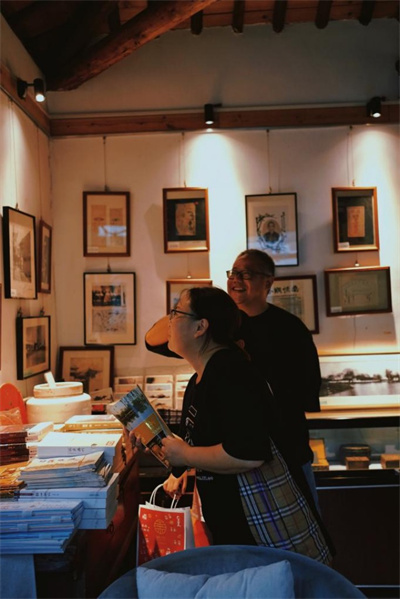
Talking about his collection, Mu said he loves old objects and believe that they should not be forgotten in the passage of history. Over the past decade, he has gathered more than 30,000 old photos by means of buying online, accepting donations, participating in auctions and recycling.
"A large part of the photos came from waste collectors. After the museum opened, many people voluntarily asked me to keep their old photos. The photos provide a connection to urban changes and offer insight into the lives of the ordinary people," Mu explained.
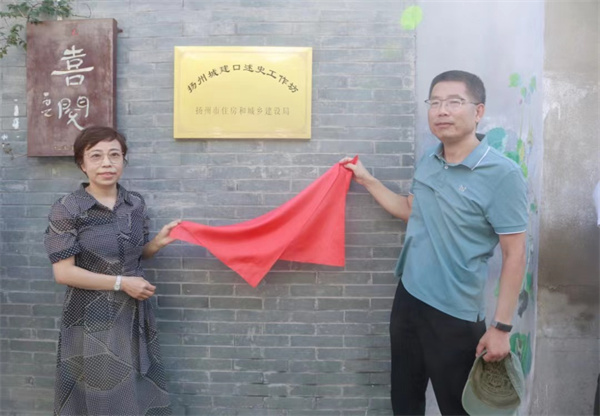
Local authorities have also supported Wu's passion as a means to preserve the city's memories. On September 26, 2021, also the fifth "Ancient City Preservation Day" in Yangzhou, his museum was officially recognized as the "Oral History Workshop on Yangzhou City Development." With the new status, Mu invited experts and citizens to tell the stories behind the old photos. Some workers previously involved in the city's construction projects also shared their experiences, helping to preserve the history in a vivid way.
This year, the museum also published an album featuring the photos newly collected in 2022, which has been promptly collected by Yangzhou Municipal Archives. To date, the museum has published three such photo albums.

